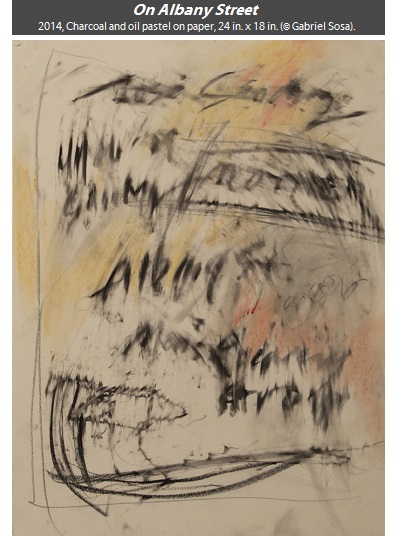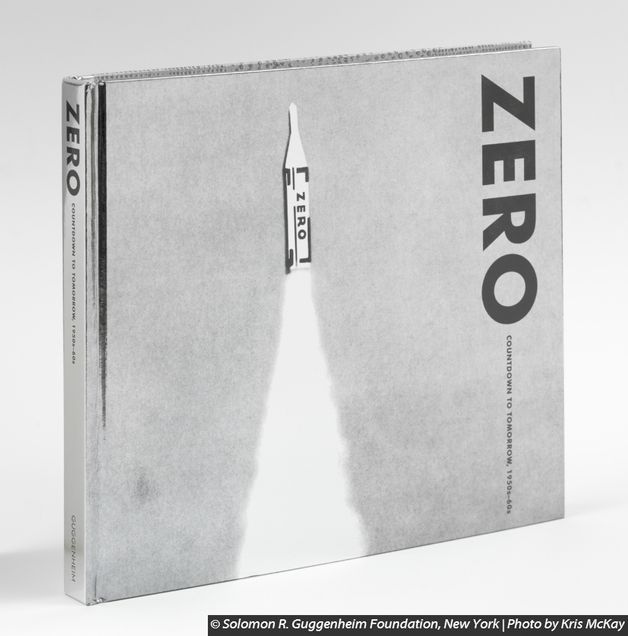news
Editors’ Introduction

The current issue of SEQUITUR takes as its theme the concept of interface. In its noun form, “interface” suggests a point of access, a mode of mediation, and a site of contact. As a verb, it refers to an interaction, connection or dialogic exchange between a range of entities — including individuals, institutions, disciplines, objects, and ideas. Broadly speaking, “interface” thus expresses a means or a site for the transfer, communication, or translation of knowledge, constituting an idea that is inextricably bound to the creation, study, and consumption of art and architecture. This issue’s contributors engage the theme in varied, provocative ways: they investigate how people have interacted with artworks and buildings in the past or the present; they meditate on the role of the artist and scholar in translation; and they explore how exhibitions may function as dialogues between artworks, museums and viewers. Moreover, our contributors showcase the ways in which both works of art and their scholarly consideration facilitate a deeper understanding of the intersection of art history and cultural life.
This issue’s featured essay, “Building Babel: The 1876 International Exhibition at the Philadelphia Centennial” by Kelsey Gustin, dissects the unusual floor plan of the Centennial’s arts exhibition, which included works from Europe and the United States, to reveal its underlying ideological agenda. As Gustin’s analysis illuminates, Chief of the Bureau of Installation, Henry Pettit, and Chief of the Bureau of the Arts, John Sartain, created an interface between nations and visitors by negotiating the space allocated to each country and arranging the pieces so as to invite visitors to compare the art of Europe and the United States. As planned by Pettit and Sartain, and encountered by fairgoers, the exhibition’s layout served to legitimize American art within a global context.
The reviews included within this issue analyze three exhibitions—two current shows in Boston and one recently closed exhibition in Istanbul. Bryn Schockmel reviews the first monographic presentation of Italian Renaissance painter Carlo Crivelli’s work to an American audience at Boston’s Isabella Stewart Gardner Museum. By highlighting certain curatorial decisions and fascinating comparisons, Schockmel draws attention to the ways in which an institution can shape the potential modes of interface between viewers and artworks. Elisa Germán reviews a second Boston exhibition: the Institute of Contemporary Art’s Leap Before you Look: Black Mountain College 1933-1957. Here Germán examines the first large-scale museum exhibition in the United States to treat this historic locus of artistic experimentation and exchange. Finally, in her review of Camera Ottomana: Photography and Modernity in the Ottoman Empire, 1840-1914 at Koç University Research Center for Anatolian Civilizations in Istanbul, Turkey, Lydia Harrington explores the exhibition’s various didactic elements. She examines how maps, timelines, and supplementary text are used to illuminate photography’s historic role as interface for the Ottoman Empire by portraying its riches to an international public.
This issue’s two research spotlights consider technology and translation as modes of interface. SEQUITUR Senior Editor Steve Burges examines ASK Brooklyn Museum, a smartphone app that invites curious visitors to ask questions or start conversations about the artwork they see on display. Burges illustrates how the app’s easy-to-use interface grants visitors access to the museum’s institutional knowledge by encouraging them to ask questions and supplying a team of experts—the museum’s own art historians and educators—to answer queries in real time. Meanwhile, Annemarie Iker explores the multilayered interpretation that accompanies the process of translating ideas across media. She reflects on her experience translating Spanish artist Darío de Regoyos’ 1889 travelogue, España negra, and considers how this process, and the range of voices and viewpoints embedded in the literature itself, manifest the notion of interface.
Finally, Gabriel Sosa’s visual essay, “Notebooks,” marks the introduction of a new feature to SEQUITUR. Sosa’s charcoal and oil pastel drawings are based on his work as a court interpreter. These frenzied images aim to fix an ephemeral moment—capturing, translating, and preserving the recollections of a witness on the stand. In various states of articulation and erasure, Sosa’s drawings elucidate the interfacing function of both the court interpreter and artist, as the vehicle through which the memories of others are given voice or visualization.
Our contributors have approached their investigations in myriad ways—they analyze exhibition design, explore the interaction of the museum with the public, and elucidate the role of the artist or scholar as translator. This, our first themed issue of SEQUITUR, thus unifies diverse subjects and perspectives under the central theme of interface. After all, the journal itself is a medium of communication and in its efforts to promote discussion and scholarly exchange it too can be seen as a mode of translation, interaction, and a site of interface.
Jordan Karney Chaim & Erin McKellar
‘Leap Before You Look: Black Mountain College, 1933–1957’

Leap Before You Look: Black Mountain College, 1933–1957
Institute of Contemporary Art, Boston
October 10, 2015 - January 24, 2016
Leap Before You Look: Black Mountain College 1933–1957, currently on view at the Institute of Contemporary Arts, Boston, features an elite and eclectic collection of works important to American and European modernism in the fields of art, film, dance, theater, music and literature. Curators Helen Molesworth and Ruth Erickson have succeeded in constructing a vivid testimony of the diverse artistic output that emerged from Black Mountain College, whose educational mission was born out of the vision of John Rice, a recently ousted college professor from Florida, who was inspired by American philosopher John Dewey’s views on education reform.
Crivelli Shines at the Gardner
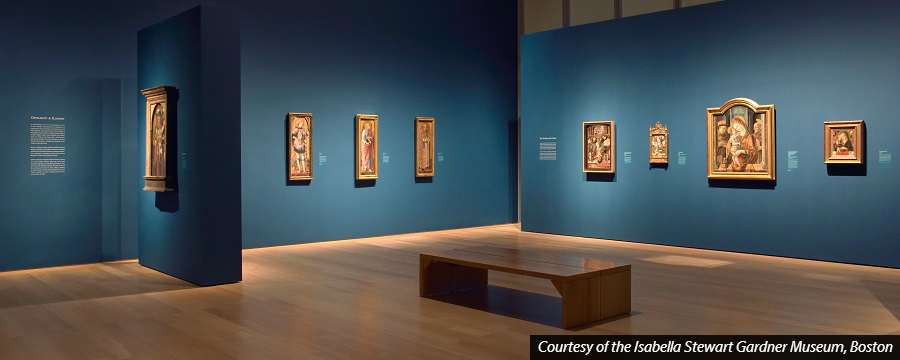
Ornament and Illusion: Carlo Crivelli of Venice
Isabella Stewart Gardner Museum, Boston
October 22, 2015 - January 25, 2016
The Isabella Stewart Gardener Museum of Boston, on the heels of last year’s outstanding show of sculptors’ drawings, has mounted another brilliant Renaissance exhibition: “Ornament and Illusion: Carlo Crivelli of Venice.” This monographic presentation, the first in the United States on the fifteenth-century painter, introduces audiences to an artist who may be unfamiliar, but quickly captivates.
Building Babel: The 1876 International Exhibition at the Philadelphia Centennial
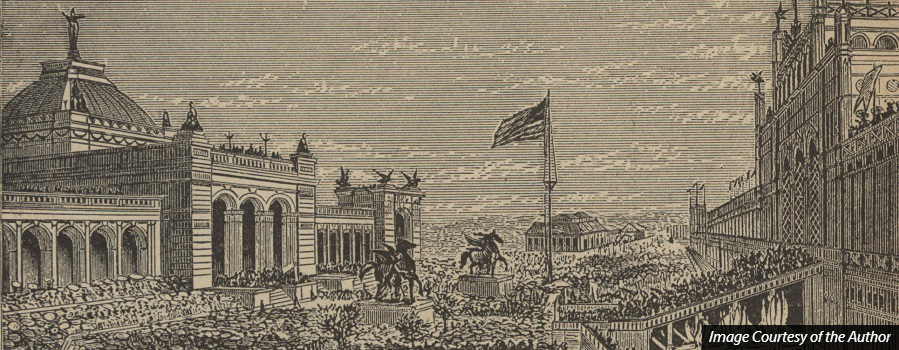
The Centennial Exposition opened on May 10, 1876, and attracted nearly 10 million visitors during its six months of operation. [1] Covering 450 acres of Fairmount Park in Philadelphia, the Centennial, officially titled the International Exhibition of Arts, Manufactures, and Products of the Soil and Mine, featured five grand structures and a collection of temporary pavilions that dotted its picturesque landscape. [2] The only building to survive is Memorial Hall, a permanent structure of glass, iron, and granite that housed the “Arts” display and functioned as one of the five exhibition halls of the fair (Fig. 1). The floor plan of the edifice and its annex reveals an unexpected layout of nations (Fig. 2). Instead of a strictly compartmentalized grid that clearly segregated each state, the plan suggests a scattered realization that frequently split countries between two buildings, often requiring them to share gallery space. In a few cases, narrow hallways featured art from two countries, their paintings literally facing off against each other. Within the context of a world’s fair, position in an exhibition generally corresponded to a predetermined order of importance. Rather than reserving the most desirable locations for its arts, the United States often shared covetous positions or yielded territory to other countries.
Notes about Contributors
Jordan Karney Chaim is a doctoral student and Raymond and Margaret Horowitz Foundation Fellow in American Art at Boston University where her research focuses on intersections of contemporary American and Latin American art in California. Before attending Boston University, she was the Assistant Director at Mary Ryan Gallery in New York.
Notebooks
It is the job of a Court Interpreter to translate both the trial proceedings to a witness, and their testimony to the court. As the witness attempts to recall events from memory, sometimes long passed, the interpreter must render those memories as faithfully as possible while remaining grounded in the immediate present. The Court Interpreter functions as translator, surrogate and interface—between the witness and the court, memory and reality, the past and the present. -Jordan Karney Chaim
“Based on my work as a Court Interpreter, these images belong to a series of drawings that reference the notes taken during witness testimony in order to ensure the accuracy and precision of the oral translation. They evoke the parallel process between the witness recalling memories and the interpreter, who disposes of memories as soon as they are formed, creating space for the next words to be interpreted. The quick, palimpsestic mark-making implies the ephemerality of memory, hinting at the rapidness with which language and art are often experienced, leaving us with only a lingering impression of the content.”
Gabriel Sosa
Book Review: ‘ZERO: Countdown to Tomorrow, 1950s-60s’
VALERIE HILLINGS,
with contributions from Daniel Birnbaum, Edouard Derom, Johan Pas, Dirk Pörschmann, Margriet Schavemaker.
ZERO: Countdown to Tomorrow, 1950s-60s.
New York: Solomon R. Guggenheim Museum, 2014. 244 pp.; 170 color ills.
$65
9780892075140 0892075147
Catalogue of an exhibition held in Solomon R. Guggenheim Museum, New York, from October 10, 2014 to January 7, 2015.
In the fall of 2014, the Guggenheim Museum in New York presented the exhibition ZERO: Countdown to Tomorrow, 1950s - 60s, the German Group Zero’s first large scale historical survey in the United States. One of many artist groups to emerge during the immediate postwar period, Group Zero sought to break with past traditions and create a new beginning for art through an investigation of alternative methods and materials. Its core members included Otto Piene, Heinz Mack, and Günther Uecker, along with thirty-seven other artists that the exhibition curator, Valerie Hillings, calls the “ZERO network.” Differentiated from the German Group Zero through its capitalization, the ZERO grouping comprised artists scattered throughout the globe: in ten countries and over four continents. These artists not only shared similar tendencies in their artwork, but also made direct contact with the Group Zero in Germany. While in the past few years there have been a number of exhibitions aimed at historicizing Group Zero – at the Boston Cyberarts Gallery (2015), the Neuberger Museum of Art (2014), and Sperone Westwater in New York (2008), to name a few – this exhibition repositions the Group Zero artists. By highlighting key artworks and Group Zero’s exhibitions and publications, Hillings demonstrates how the Group Zero practitioners were involved in a global network, placing them among artists engaged in similar art-making practices that collectively expressed a forward-looking vision.
Editors’ Introduction
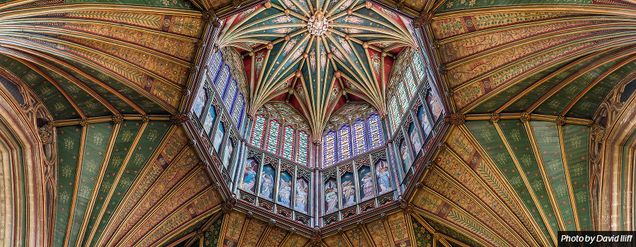
As the current issue of SEQUITUR goes to press, it is difficult to believe that it is only our second issue. Since launching last December, our readership has expanded well beyond the confines of our hometown in Boston. Visitors to www.bu.edu/sequitur hail from across the country, and from as far away as China and Australia. The geographic reach of our readers is reflected in the authors of this issue, who represent five schools from locales as distant as Alabama and Scotland. The growth of SEQUITUR in its first year is a testament to the vitality of art historical research and scholarship around the globe, especially among graduate students, who are already staking their claim on the field. The present issue of SEQUITUR introduces a group of young scholars who represent the promise and productivity of this new generation.
In the featured essay, “Outside the Gate: The Seduction of Belonging in the Charleston Works of Elizabeth O’Neill Verner,” Olivia J. Kiers considers the South Carolina artist’s drawings of Charleston’s urban center and rural outskirts, highlighting the complementary modes of curiosity and longing, observation and occlusion, they reveal. Kiers elucidates Verner’s own liminal identity in Charleston as a compositional feature, one that propelled her choice of subjects and views.
Amy Williamson’s interview, “The State of Museum Visitor Engagement,” with Kristi McMillan, Assistant Curator of Education for Visitor Engagement at the Birmingham (Alabama) Museum of Art, probes current strategies for engaging museum goers inside the gallery, and raises questions about the role of technology in the museum experience. With its focus on contemporary museological practices, Williamson’s interview stands as a coda to SEQUITUR’s first issue, which focused on art collecting and exhibition practices.
Three publication reviews present critical perspectives on recent scholarship. Sasha Goldman reviews the exhibition catalogue accompanying the landmark Guggenheim Museum exhibition on the post-war German Group Zero and its network (closed January 2015). Conveying the grand scale and ambitious scope of the exhibition and catalogue, Goldman suggests ways that scholarship on Group Zero, its artistic networks, and the German post-war decades will play a key role in future European post-war art research. In his review of a new book by Michael Wayne, Professor in Screen Media, Brunel University, London, Bakary Diaby assesses current trends in aesthetic theory. Against the backdrop of a larger critical interest in the “political potential” of philosophical aesthetics, Diaby asserts the value of Wayne’s interest in Kantian aesthetics as a way to critically approach present socio-economic and political inequities. Lastly, Valentina S. Grub introduces a highly anticipated new offering on English Gothic architecture and design by Paul Binski, Professor of the History of Medieval Art and Fellow of Gonville and Caius College, Cambridge University. Grub encapsulates Binski’s central claims of the widespread influence of the late medieval English Decorated Style and the doctrinal efficacy of its ornate design elements. She also calls attention to areas that would benefit from further research and discussion, a prescient reminder of the ever-evolving nature of art historical inquiry.
This issue also includes two Research Spotlights. First, Bradley J. Cavallo introduces the curious case of Italian funerary portraits painted on metal and stone. Cavallo’s account of his discovery of this distinct type of portrait, now a central part of his dissertation, is a heartening reminder of the often unpredictable and serendipitous nature of art historical research. Additionally, Lydia Harrington provides a first-hand account of the second annual Art+Feminism Wikipedia Edit-a-thon in Boston (one of 40+ simultaneously staged worldwide). Part reflection, part interview, Harrington discusses her experience as a participant in the event alongside excerpts from a discussion with Boston-area organizers Gabrielle Reed and Amanda Rust.
Finally, SEQUITUR Junior Editor Ewa Matyczyk reports on “Creative Conflict,” the 31st annual Boston University Graduate Student Symposium on the History of Art & Architecture, held February 27-28, 2015, at the Boston University Art Gallery and the Museum of Fine Arts, Boston. Engaging with the event’s theme, presentations, and discussions, Matyczyk foregrounds the destructive and generative potential of conflict, and draws attention to the fundamental role of artistic production in shaping, mirroring, and commemorating cultural identities.
This issue of SEQUITUR is notably varied in the range of topics explored. Moving from medieval design to contemporary critical theory, Italian tombs to American cityscapes, the essays, reviews, reflections, and conversations mirror the diversity and breadth of current research, methods, and discourses comprising art and architectural history today.
Beth Pugliano
Book Review: ‘Gothic Wonder: Art, Artifice, and the Decorated Style, 1290-1350’
PAUL BINSKI.
Gothic Wonder: Art, Artifice, and the Decorated Style, 1290-1350.
New Haven: Yale University Press, 2014. 452pp.; 140 color ills., 175 b/w.
$75.00
9780300204001
Paul Binski is well known among medievalists as an accomplished academic and expert on Gothic art and architecture. In his latest book, Gothic Wonder, which focuses on the art and intentionality of the English Decorated Style, he re-establishes the Middle Ages as a time of sublime aesthetic creativity.
Notes about Contributors
Olivia J. Kiers is in the final semester of the M.A. program in History of Art & Architecture at Boston University. She is currently a graduate assistant at the Boston University Art Gallery at the Stone Gallery. Olivia's research interests focus on 19th- and early-20th-century works on paper, particularly European and American prints. Her M.A. scholarly paper is entitled “The Deadly Spectacle: Experiencing World War I through the Woodcuts of Félix Vallotton.”
Amy Williamson is an M.A. student at the University of Alabama at Birmingham. Her research interests in art history include Fin-de-Siècle Vienna, female art collectors, global textiles, and Mughal art and architecture. She received her B.A. in French and Art History from Oglethorpe University in Atlanta, Georgia.
Sasha Goldman is a Ph.D. student at Boston University where her research focuses on modern and contemporary art and exhibition histories in Italy. She received her M.A. in Art History from the Tyler School of Art at Temple University and her B.A. in Art History from Connecticut College.
Bakary Diaby is a Ph.D. candidate in the Literatures in English Department at Rutgers. He works in the fields of 18th- and 19th-century Literature and Romanticism. He specializes in Philosophy of Mind, Social Theory, and Aesthetics. His particular interest lies in the politics of poverty since the Enlightenment.
Valentina S. Grub completed her B.A. at Wellesley College in Medieval & Renaissance Literature and Classical Civilization with honors. Since then she has received an M.Litt. with distinction in Medieval Studies at the University of St. Andrews, where she is currently pursuing a Ph.D. in Art History with a focus on medieval English embroidery.
Bradley J. Cavallo studies with Dr. Tracy E. Cooper, Dr. Marcia Hall, and Dr. Ashley D. West as a Ph.D. candidate in art history at Temple University. He earned his M.A. in Syracuse University’s Florence Art History Program with Dr. Gary Radke and Dr. Rab Hatfield. His dissertation addresses 16th- and 17th-century oil paintings on metal and stone supports that served functions other than as altarpieces or Wunderkammer collectibles, thereby broadening the scope of appreciation for the creation and meaning of these artworks.
Lydia Harrington is a Ph.D. student in the Department of History of Art & Architecture at Boston University. She works on the representation of Islamic art and architecture in museums and the introduction of modern institutions to 19th-century Ottoman Baghdad.
2014-2015 SEQUITUR Editorial Team
Senior Editors: Beth Pugliano, Martina Tanga, Naomi Slipp
Junior Editors: Ewa Matyczyk, Steve Burges
Faculty Advisor: Professor Alice Tseng
Special Thanks to Susan Rice and Chris Spedaliere



